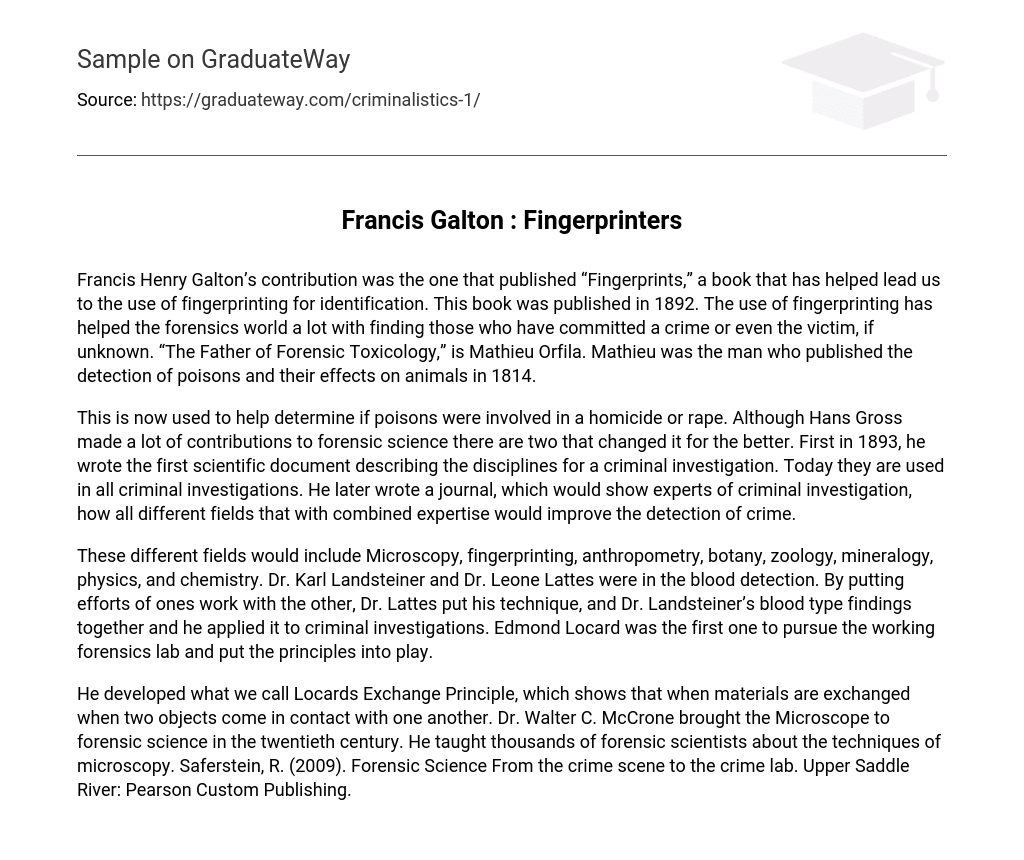Francis Henry Galton published “Fingerprints” in 1892, contributing to the adoption of fingerprinting for identification purposes. This publication has greatly aided the field of forensics in the identification of criminals and unidentified victims. Mathieu Orfila, also known as “The Father of Forensic Toxicology,” published a work on poison detection and its effects on animals in 1814.
This paragraph describes how Hans Gross’s contributions in forensic science, particularly two significant ones, have improved the determination of whether poisons were involved in homicide or rape cases. In 1893, he authored the first scientific document that detailed the disciplines necessary for conducting a criminal investigation. These guidelines are now universally applied in all criminal investigations. Additionally, Gross wrote a journal that highlighted how combining expertise from various fields of criminal investigation could enhance crime detection efforts, serving as a valuable resource for experts in the field.
In the field of forensic science, various disciplines are involved such as microscopy, fingerprinting, anthropometry, botany, zoology, mineralogy, physics, and chemistry. Notably, Dr. Karl Landsteiner and Dr. Leone Lattes made significant contributions to blood detection. By combining Dr. Lattes’ technique with Dr. Landsteiner’s blood type findings, they applied these advancements to criminal investigations. Additionally, Edmond Locard was the pioneer in establishing the first working forensics lab and implementing fundamental principles.
According to Saferstein (2009), Dr. Walter C. McCrone introduced the Microscope to forensic science in the twentieth century. He also developed Locards Exchange Principle, which explains the exchange of materials when two objects come into contact with each other. Dr. McCrone played a significant role in teaching numerous forensic scientists about microscopy techniques.





